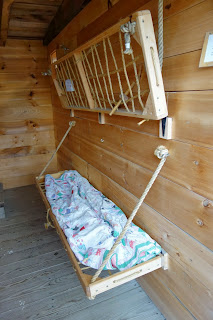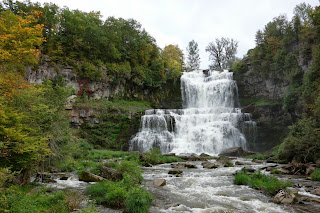We spent a few lovely days visiting a cousin of Erik's mom, Carol, and her husband Dick in northern New York state. We enjoyed their hospitality and the serenity of their lakeside home, and also did some exploring while we were in the area. One day Carol took us to see the historic Erie Canal at Chittenango Landing. We really enjoyed the restored buildings and interactive exhibits while learning about this little slice of American history. I remembered nothing about the Erie Canal from my long ago schooling, so it was fun to see it firsthand and learn together with the kids.
The Erie Canal was completed in 1825 and connected the Hudson River to Lake Erie, opening up a means of trade between the Atlantic states and the Great Lakes. Overland travel was slow and the land was wild, making commerce very difficult. The Canal opened the west of the country to trade and settlement, and contributed significantly to the expansion of the country. Chittenango Landing was built in 1855 as a dry dock where canal boats where built and repaired and could take on fresh supplies for their journey. The canal was only open from May to November, and there were thousands of boats running its length. We have been reading a fascinating book about United States history as we travel, and it's so neat to see all these little glimpses into the past.
|



















No comments:
Post a Comment
I love hearing from you and try to respond to your comments here on the page.